November 4th, 2023
Boat trip to the icebergs
After another good breakfast, a boat trip was on the agenda today. Our guide Simone picked us up at the hotel shortly after 10 a.m. and drove us to the harbor, where our excursion boat was already waiting for us:
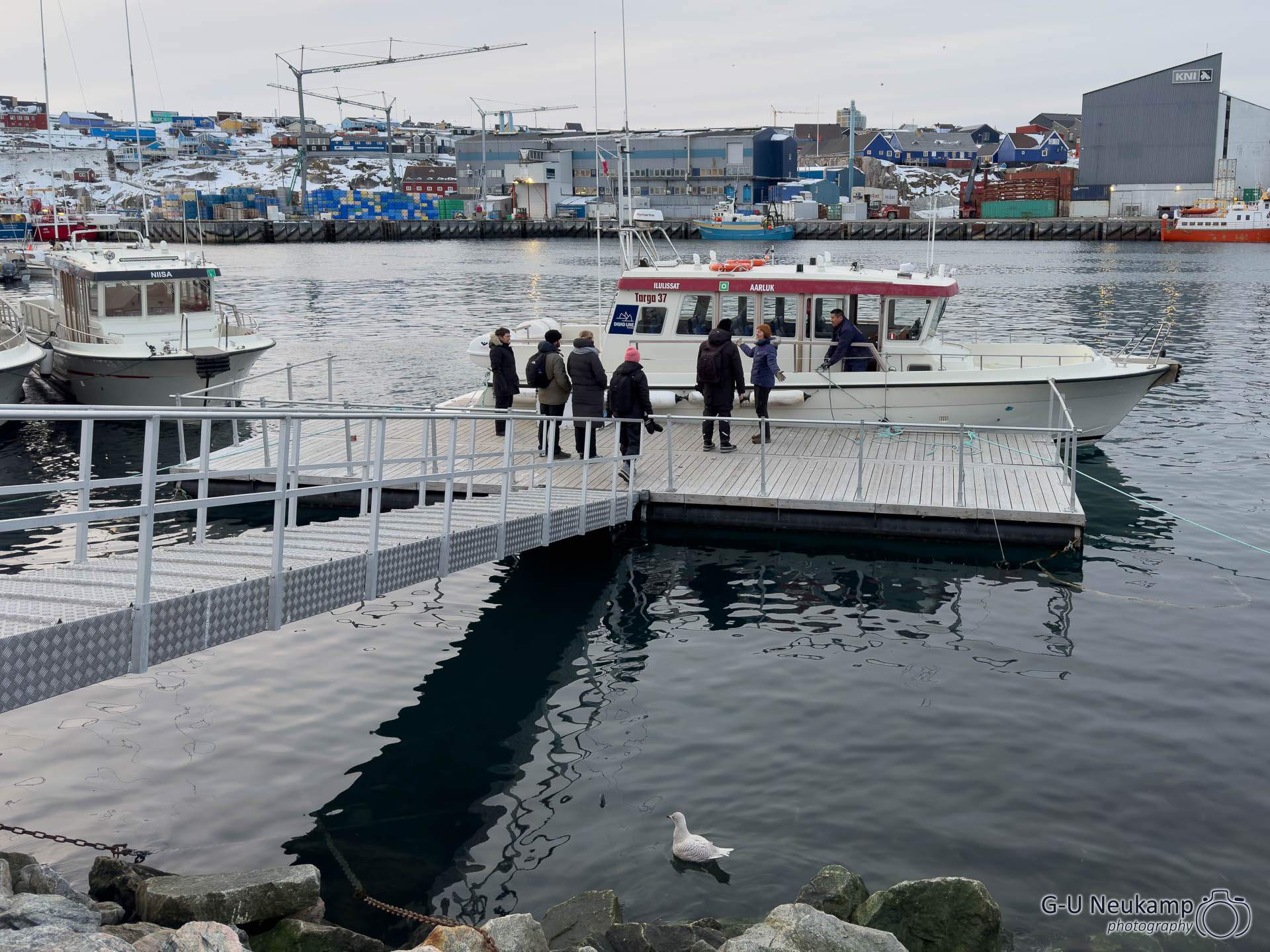
Then we set off on a 2 1/2 hour boat trip into Disko Bay to the icebergs.
It was a great experience, but also very cold 🥶🥶🥶🥶🥶. The icebergs were very close, and a piece of one broke off with a loud roar. Some of them were gigantic, especially when you consider that only around 10% of them are visible above the surface of the water!
Here is a selection of pictures from this tour:
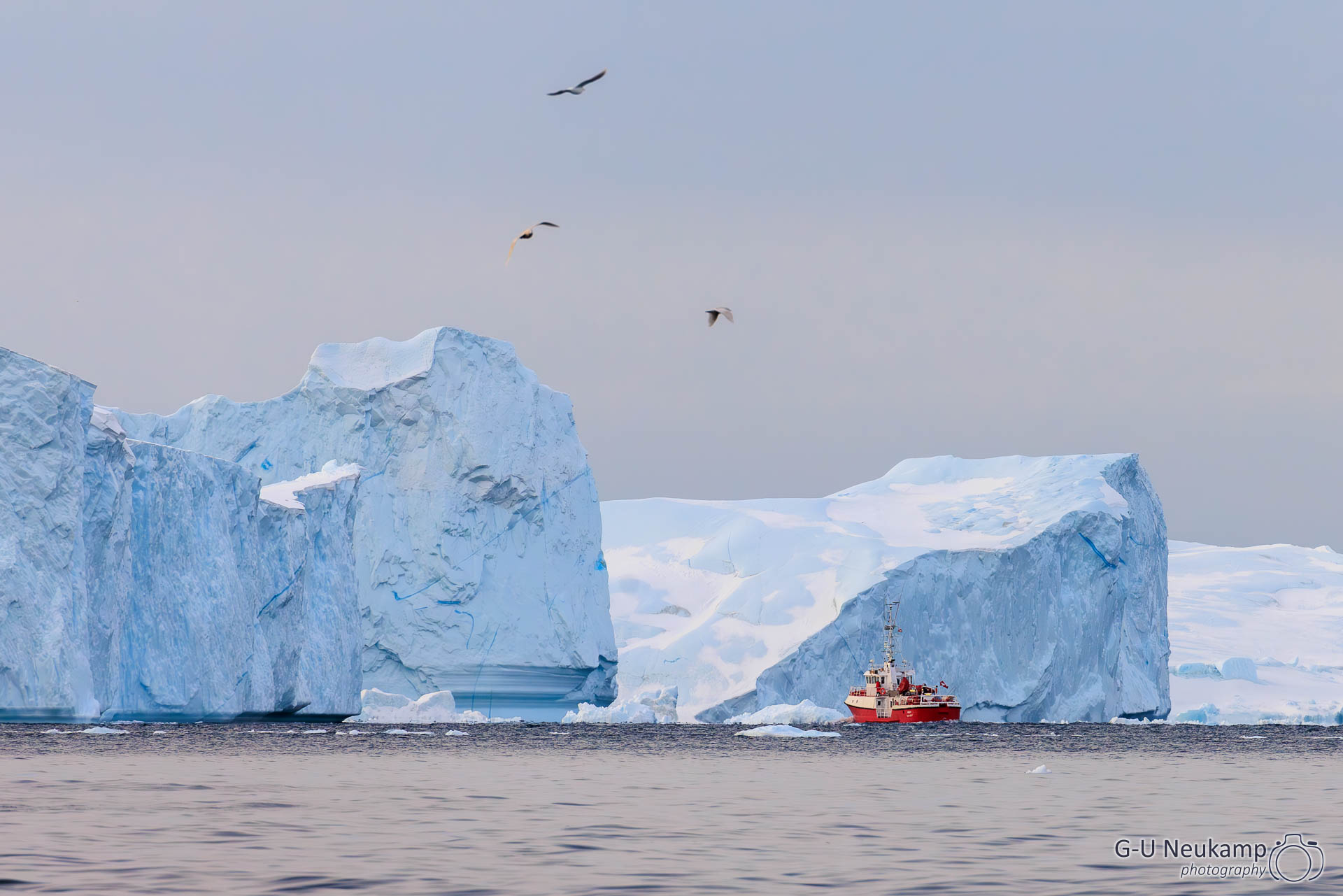
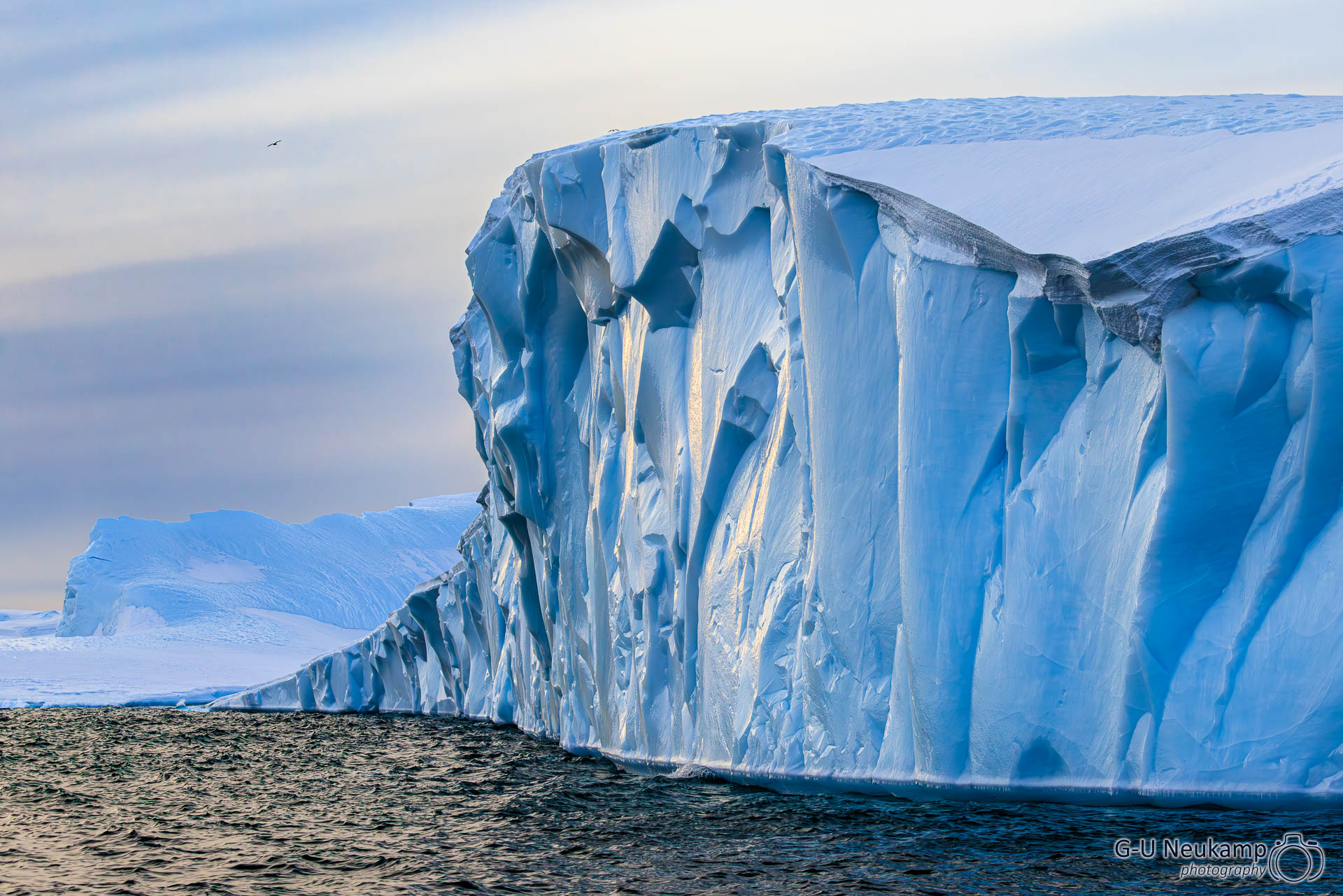
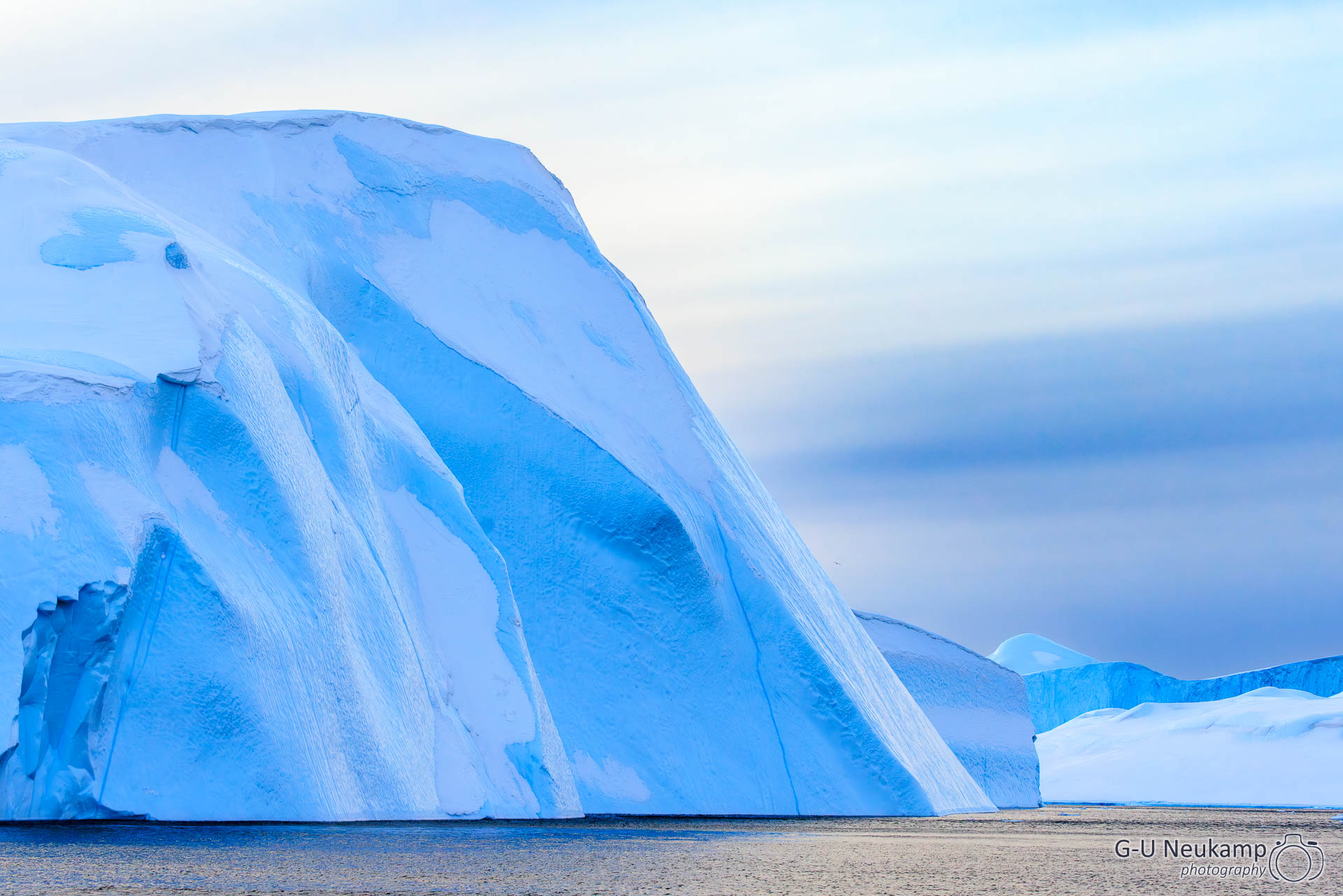
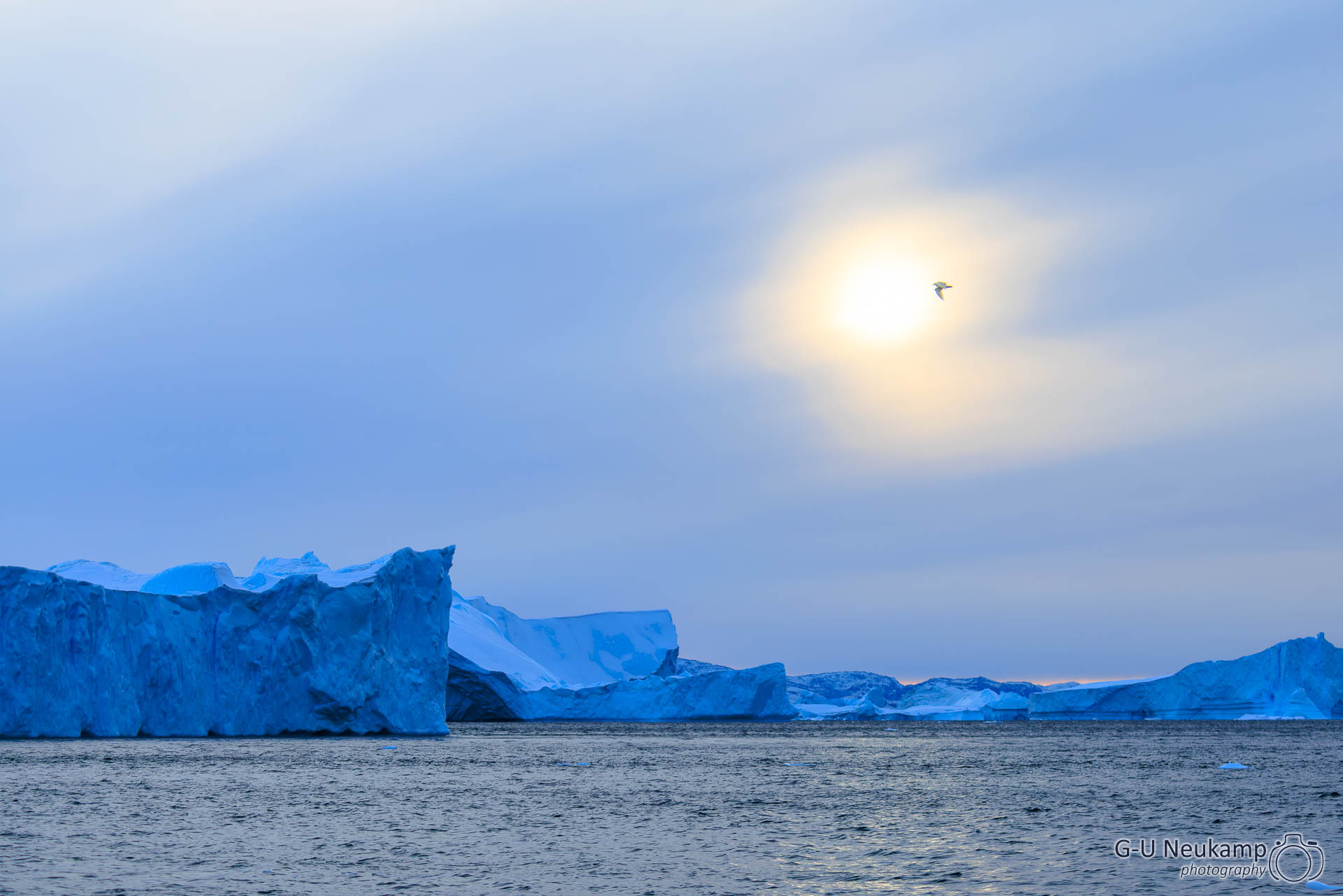
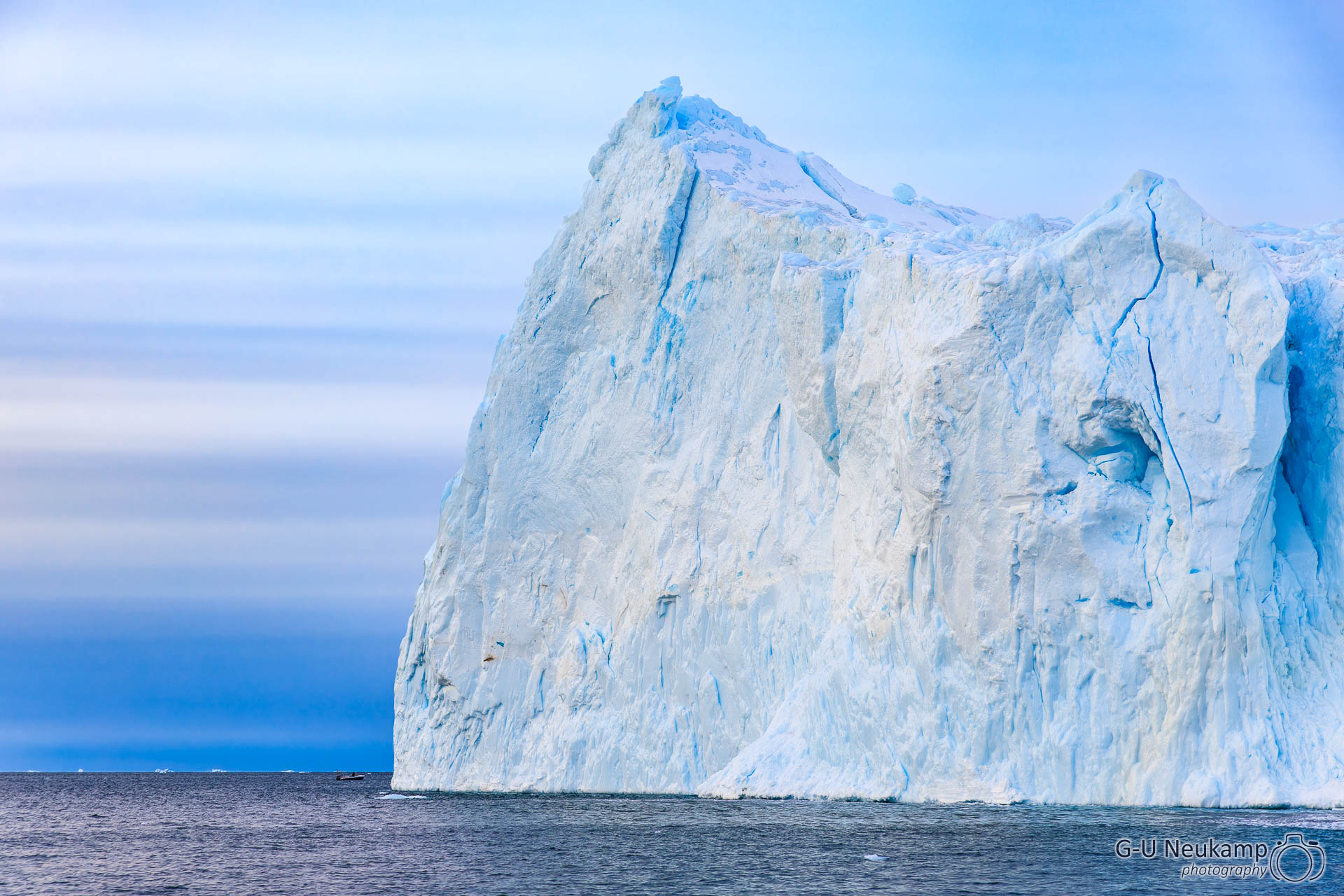
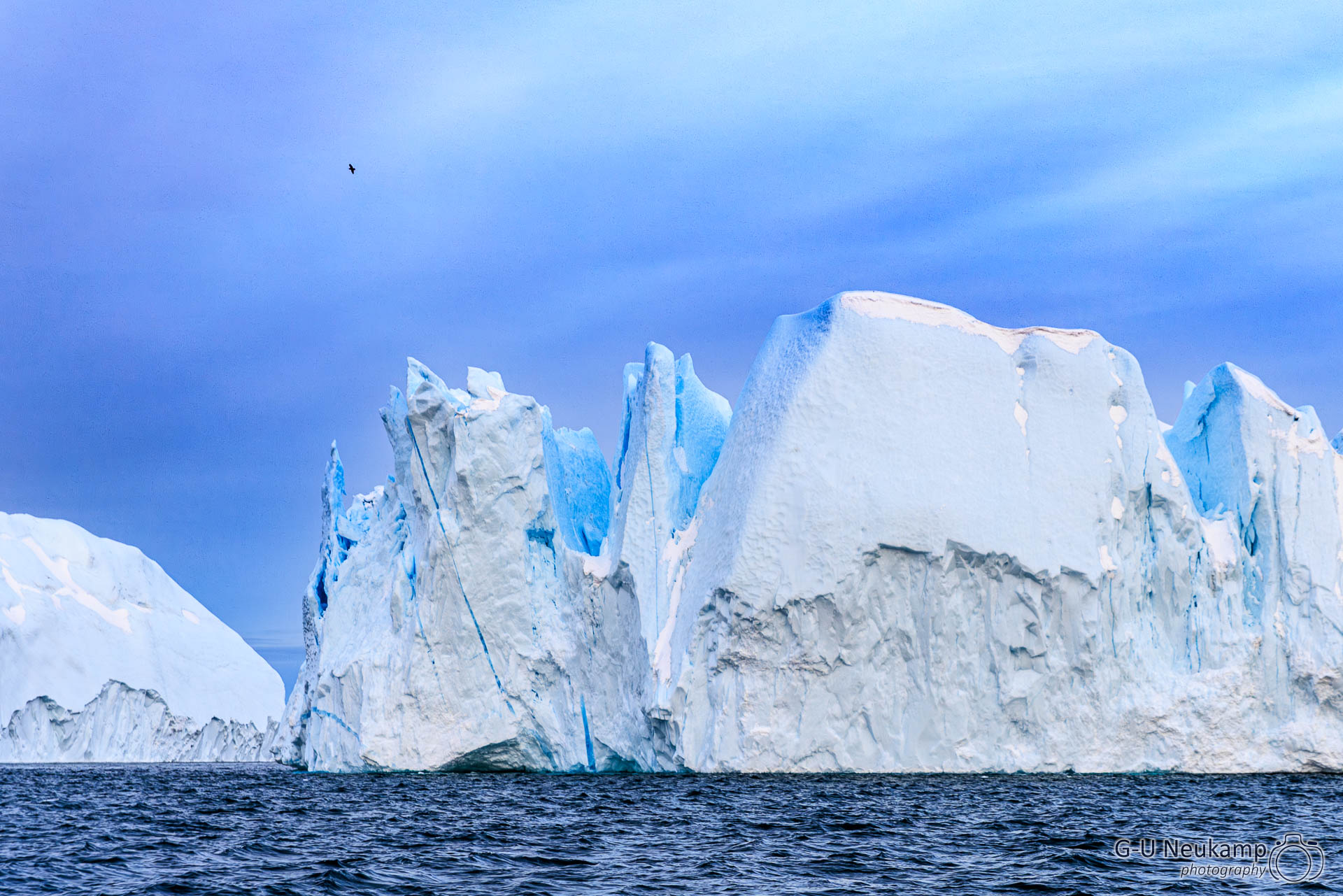
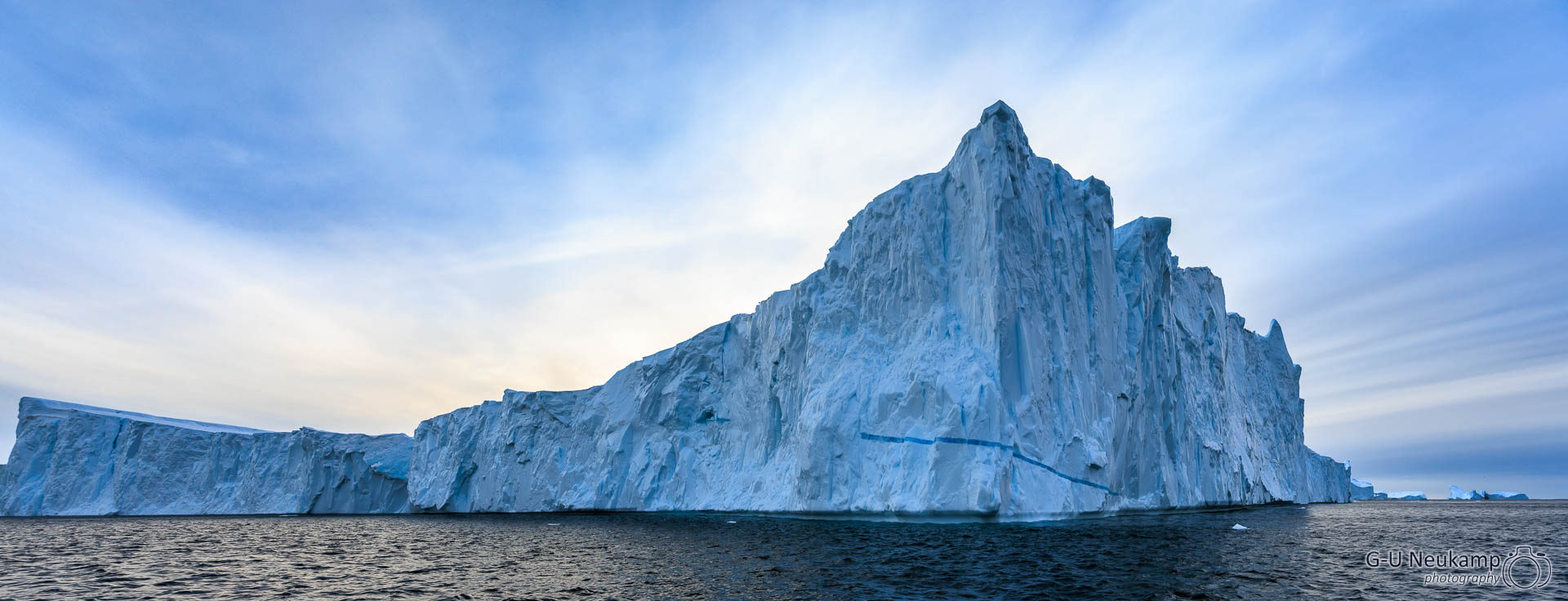
Our guide’s explanations on the tour were very interesting and sometimes depressing: climate change is also noticeable here. Of the three glaciers that calve into the Ilulissat Icefjord, two have already come to a standstill. As global warming progresses, there will probably be no more icebergs in Ilulissat in another 20-25 years, as even the last glacier will die due to global warming.
If the entire Greenland ice sheet disappears, the global sea level will rise by around 7 meters. Our tour guide said to the Dutch couple traveling with us: “Sorry, but then you can come to Greenland”. The missing ice load would then cause Greenland to rise by around 1000m.
To lighten the mood a little after this depressing forecast, our guide then handed out a drink he had mixed himself using ancient glacier ice that he had fished out of the sea shortly before. It was an Icefjord gin with a special tonic that is mixed locally. Funnily enough, the gin is not allowed to be produced in Greenland (high-proof spirits are not permitted), so the ingredients, including glacier water, are brought to Denmark, where the gin is produced and then brought back to Greenland.
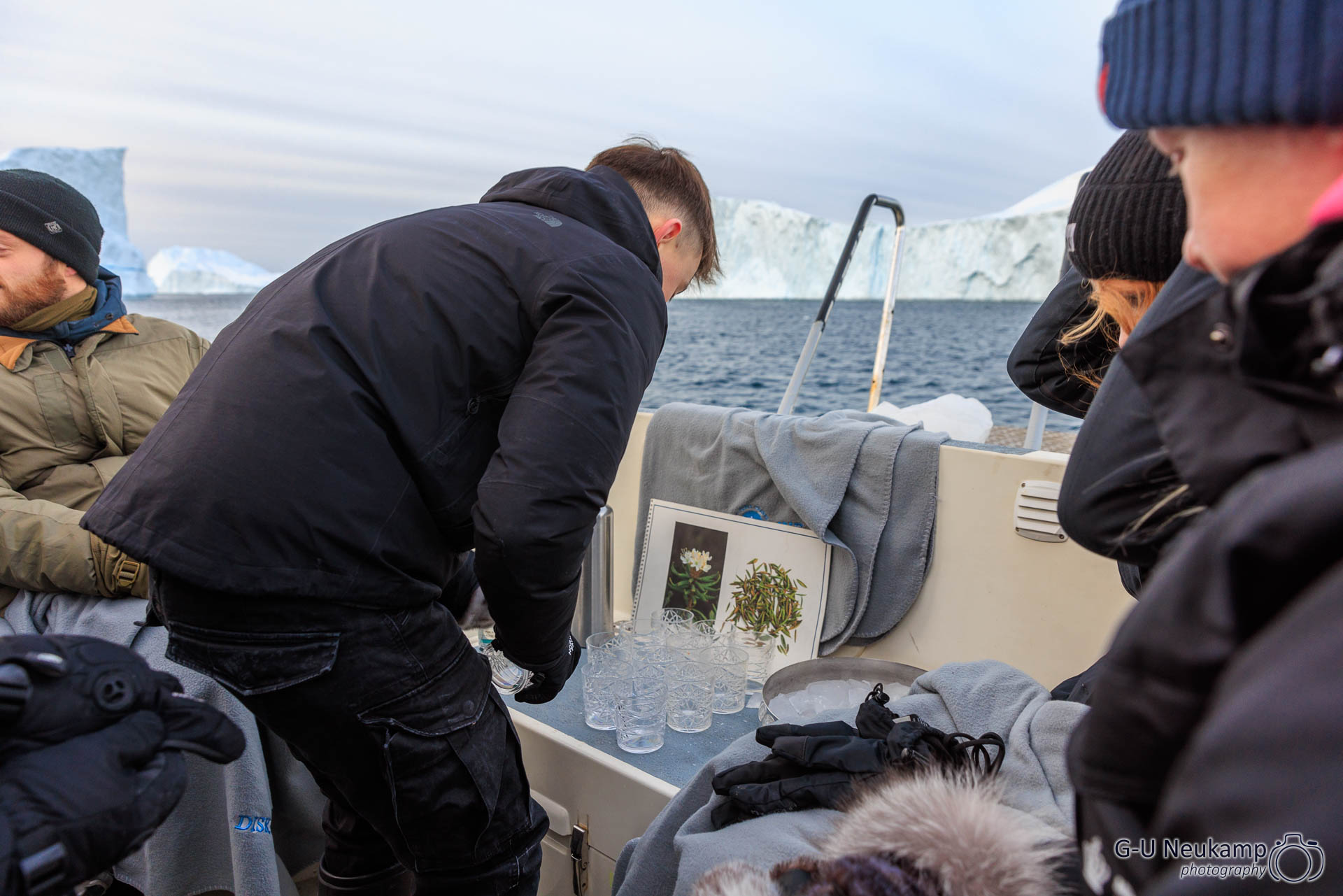
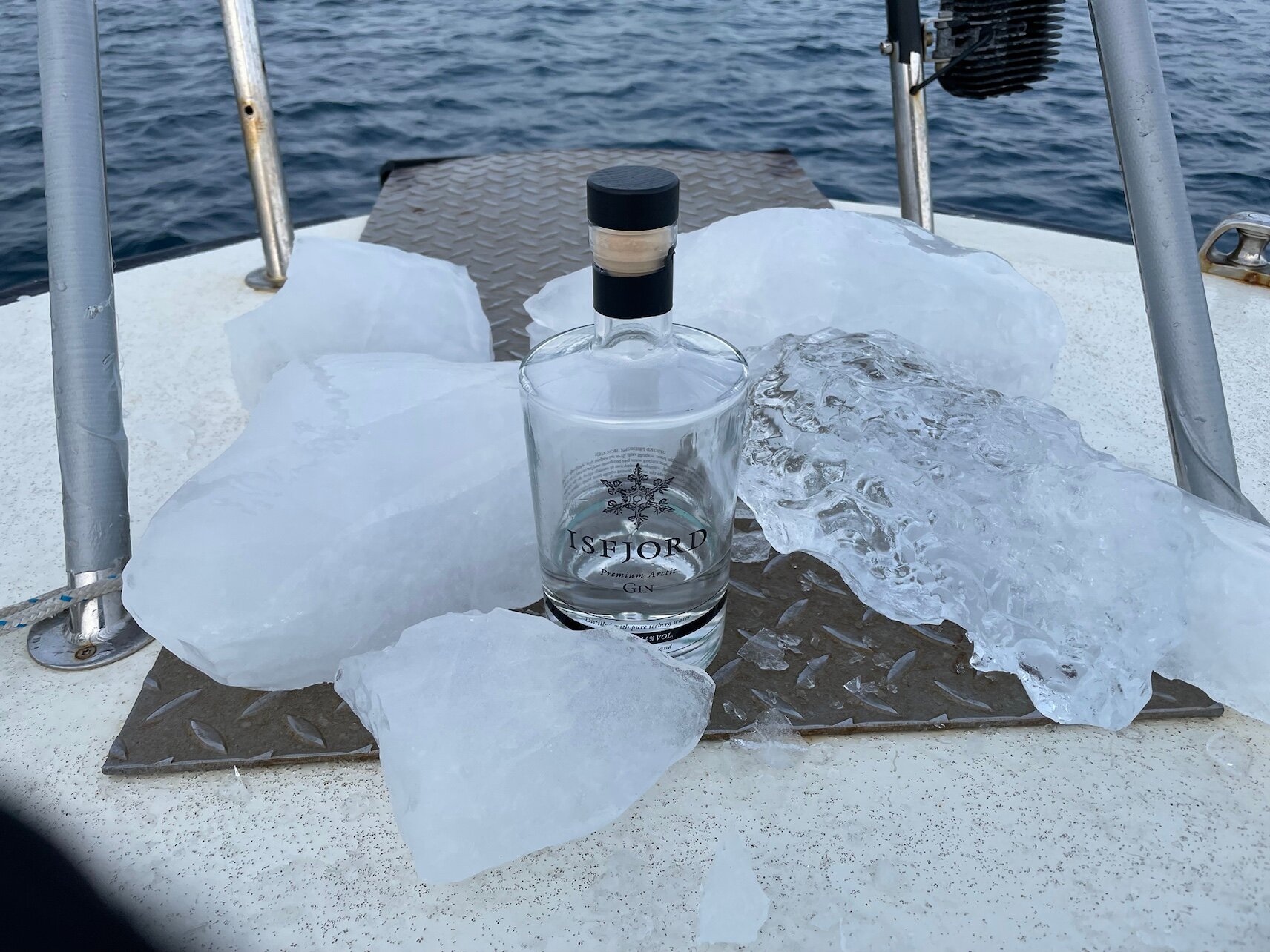
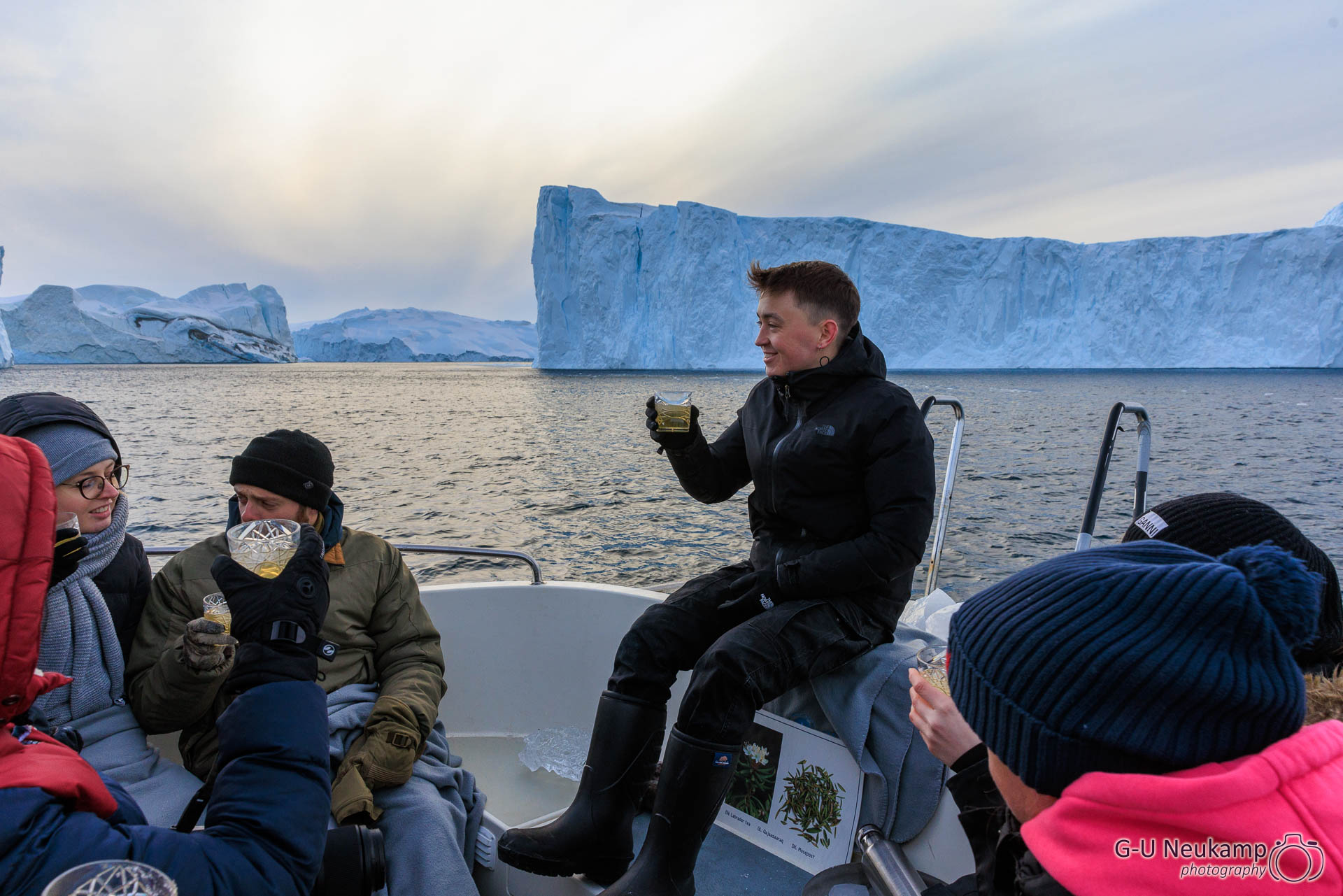
Black ice
In the second picture above you can see two different types of ice. The transparent piece on the right is called “black ice”. As it is transparent, it takes on the color of its surroundings in the water and is therefore difficult to see. It therefore poses a particular danger to ships. The white ice on the left consists of compressed snow; the white color is created by the reflection of light off the trapped air bubbles. The “black ice”, on the other hand, is formed when the meltwater freezes again.
The very interesting boat tour ended after 2 1/2 hours. We were picked up again at the harbor and driven back to our hotel.
City visit
After relaxing a little at the hotel, we took the shuttle bus to the “city” at around 3:30pm. Everything was already closed there, so we visited the nearest café. There we warmed up with a very tasty cappuccino. We then continued our search for the Hotel Icefjord. The restaurant there was highly recommended to us by our boat guide, who told us that it would be the best in Ilulissat. Here are some shots from Ilulissat in the evening:
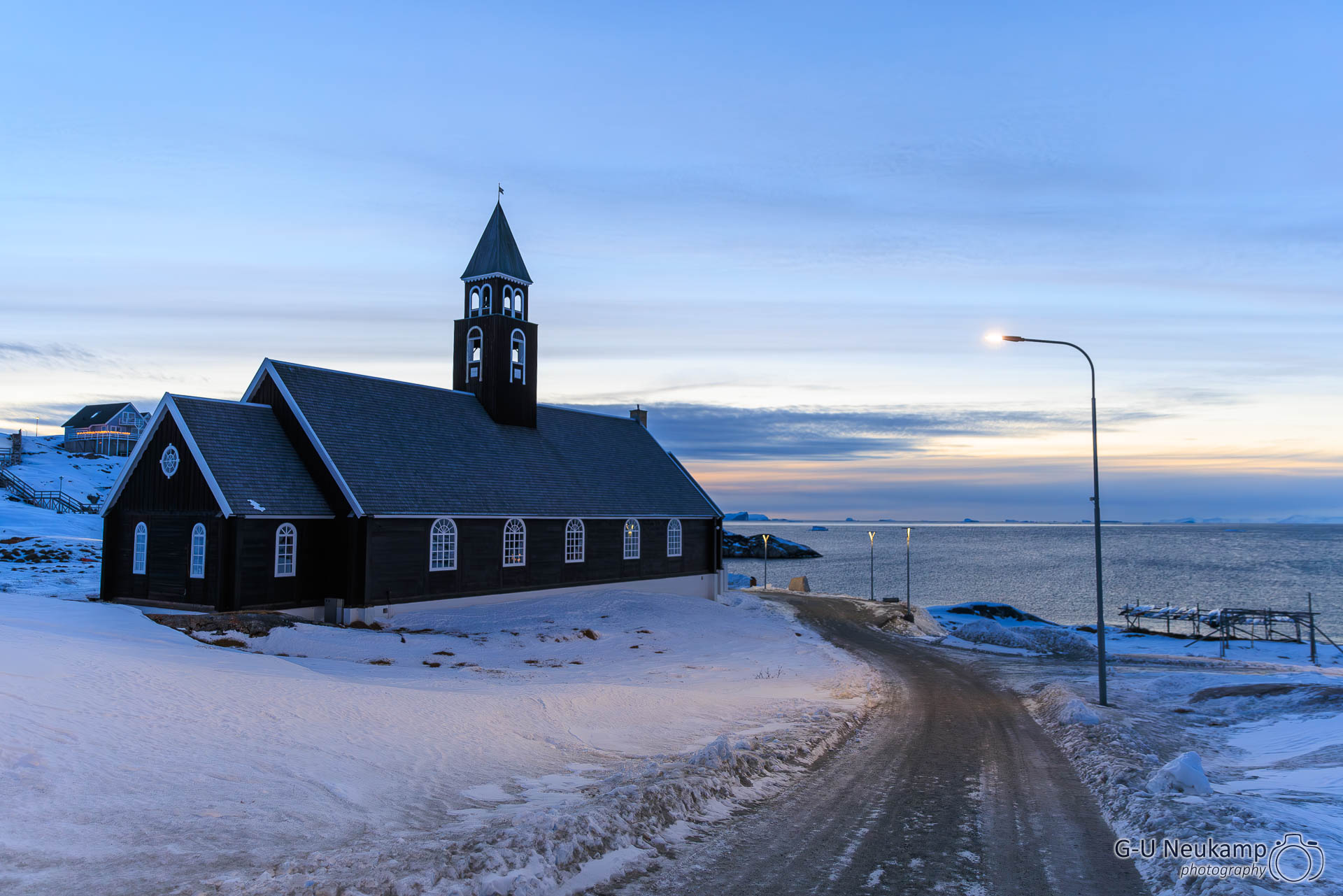
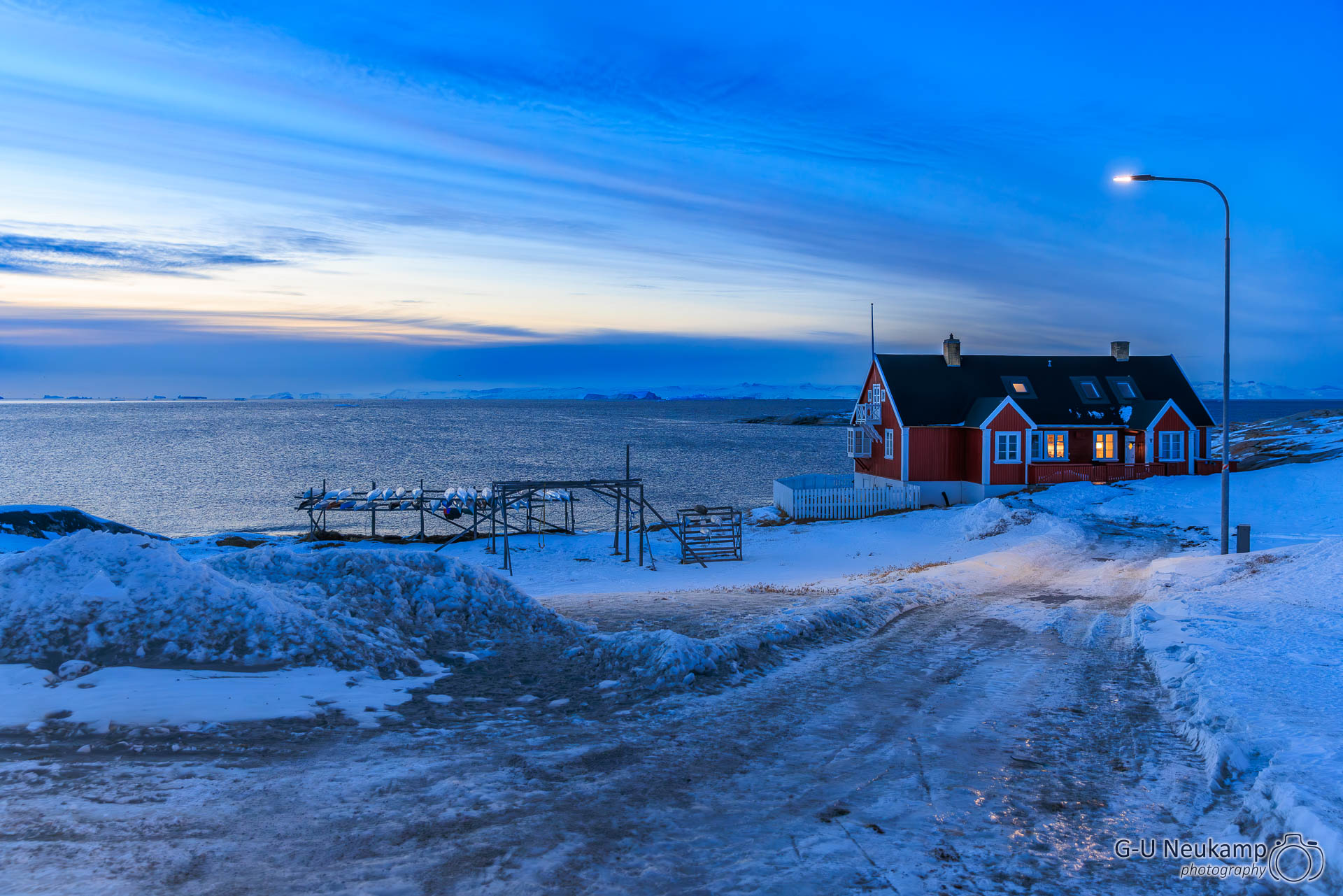
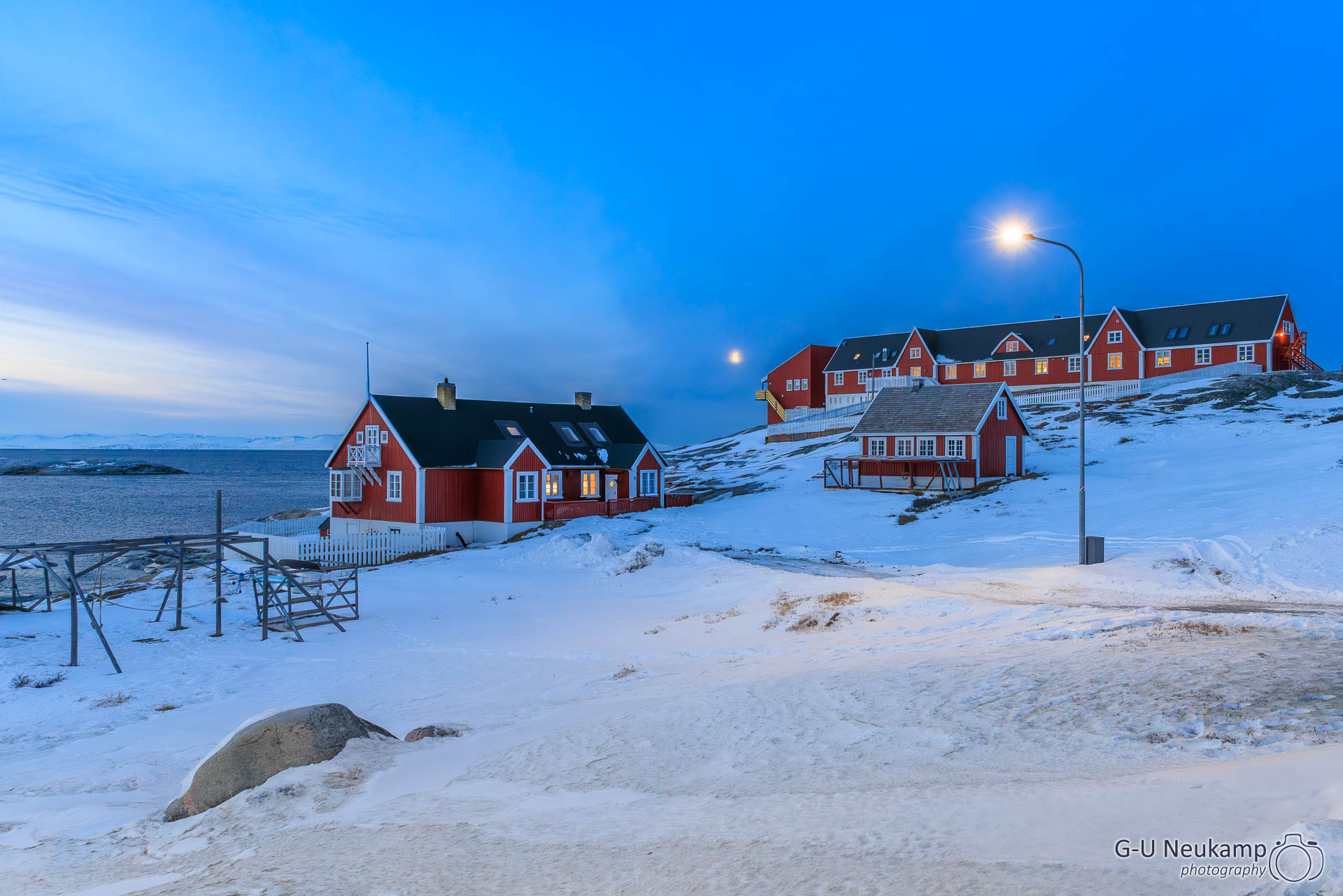
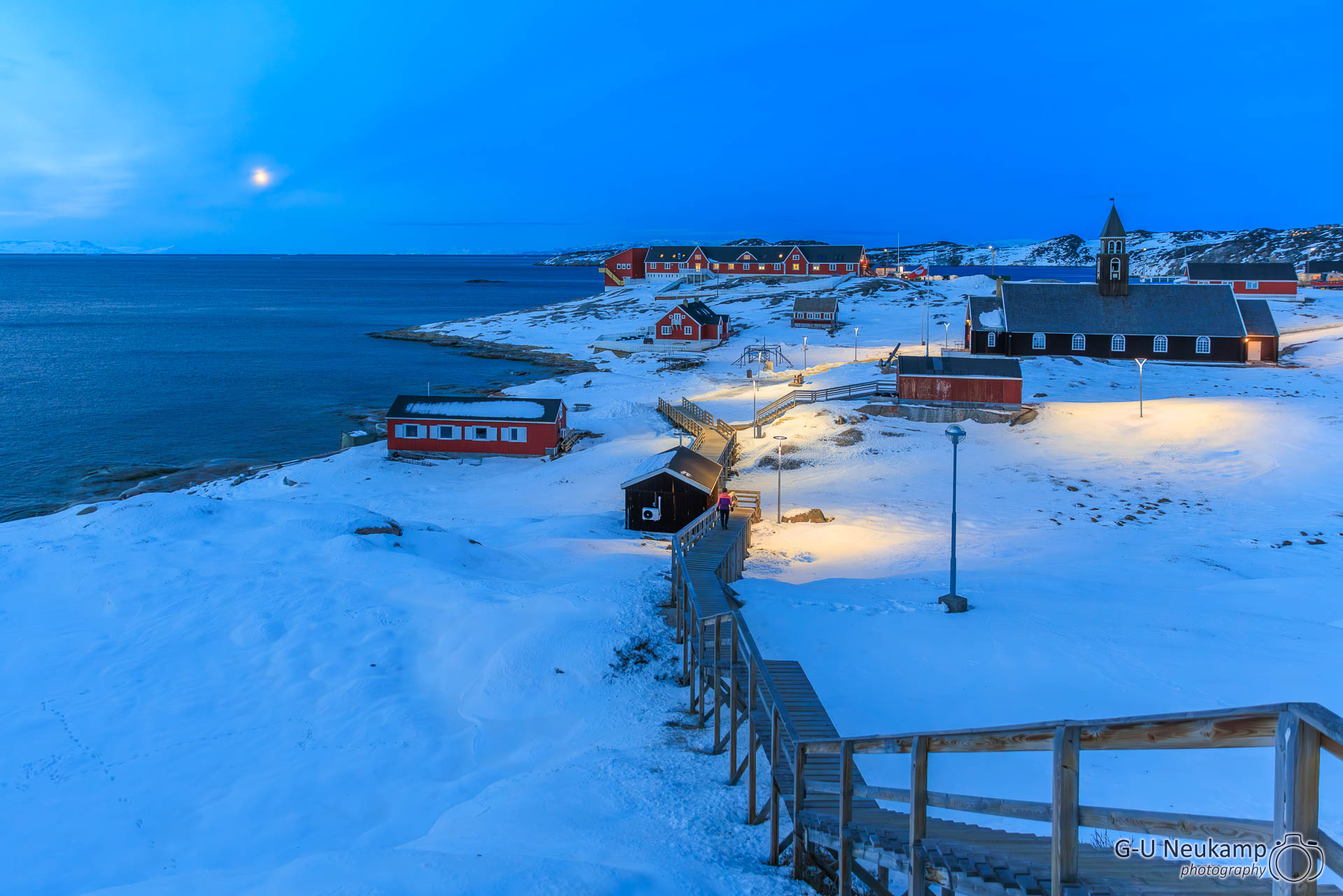
After we had gotten a bit lost, we finally reached the Hotel Icefjord and were lucky enough to get a table in the restaurant. It was Sunday and the restaurants are often fully booked, so tables should be reserved in advance. This time we were the first guests. The hotel restaurant was modern and the staff were very attentive.
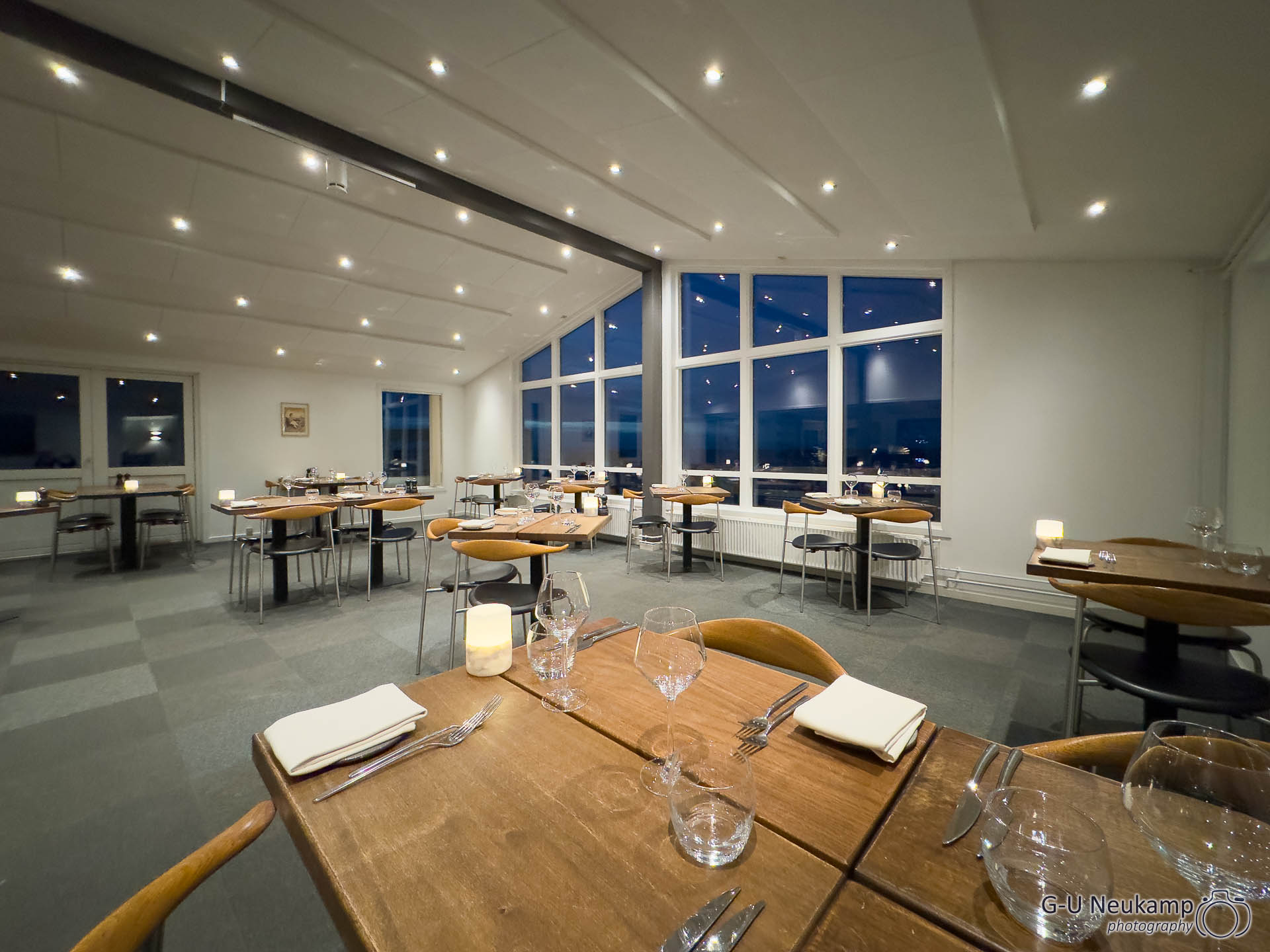
And the food was really excellent. We enjoyed the 5-course menu with accompanying wines. It was simply magnificent - but not cheap either! Slowly but unexpectedly, our trip also turned into a culinary highlight.
We spent a good three hours there and then took a cab back to our hotel feeling well-fed (and a little buzzed).
